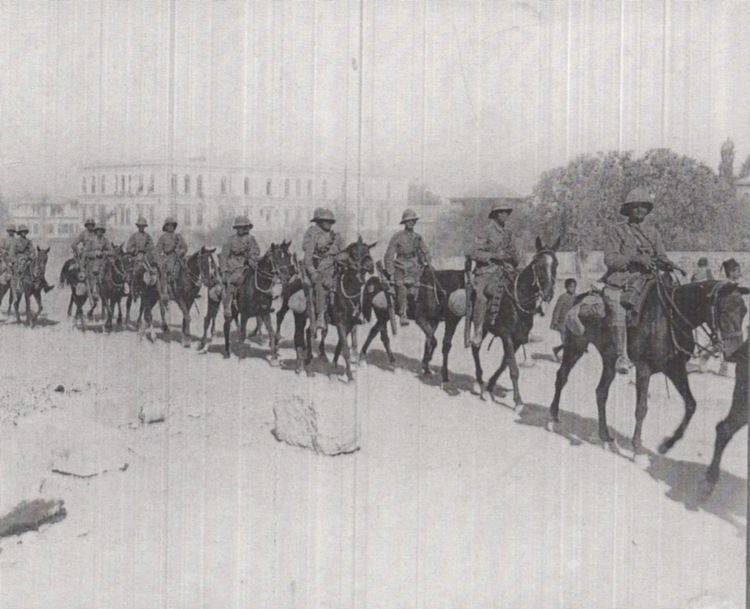Country India Type Cavalry | ||
 | ||
Active April 1918 – April 1920 Engagements World War IPalestine 1918Affair of Abu TellulBattle of MegiddoCapture of DamascusOccupation of Aleppo | ||
The 2nd Mounted Division was a cavalry division that served as part of the Egyptian Expeditionary Force in Palestine in World War I. It was formed in April 1918 when three brigades already in Palestine were merged with elements of the 2nd Indian Cavalry Division withdrawn from the Western Front. In July 1918, the division was renamed as the 5th Cavalry Division. It remained in Palestine after the end of the war on occupation duties until finally broken up in 1920.
Contents
2nd Mounted Division
In March 1918, the 2nd Indian Cavalry Division was broken up in France. The Canadian (Canadian Cavalry Brigade) and British units (notably 7th Dragoon Guards, 8th Hussars and N and X Batteries RHA) remained in France and the Indian elements were sent to Egypt.
By an Egyptian Expeditionary Force GHQ Order of 12 April 1918, the mounted troops of the EEF were reorganised when the Indian Army units arrived in theatre. On 24 April 1918, the 2nd Mounted Division was formed on the Indian Establishment. This new formation should not be confused with the original 2nd Mounted Division that saw action in the Gallipoli Campaign, though the 5th and 7th Mounted Brigades served in both.
5th Cavalry Division
On 22 July 1918, the 2nd Mounted Division was renumbered as the 5th Cavalry Division and the brigades as the 13th, 14th and 15th (Imperial Service) Cavalry Brigades. The sub units (Signal Troops, Combined Cavalry Field Ambulances and Mobile Veterinary Sections) were renumbered on the same date.
Battles
The 2nd Mounted / 5th Cavalry Division served with the Desert Mounted Corps for the rest of the war, taking part in the Second Transjordan Raid (30 April to 4 May 1918, 15th I.S. Brigade only), Affair of Abu Tellul (14 July), and the Final Offensive including the Battle of Megiddo (19 – 25 September), Capture of Haifa (23 September, 15th I.S. Brigade only) and Damascus (1 October), Affair of Haritan (26 October, 15th I.S. Brigade only) and Occupation of Aleppo (26 October).
The division remained in Palestine on occupation duties after the end of the war. However, demobilization began immediately and most of the British war time units had left by the middle of 1919. 14th Cavalry Brigade was broken up in September 1919, and the 15th (I.S.) Cavalry Brigade in January 1920. The division (and 13th Cavalry Brigade) was finally broken up in April 1920.
